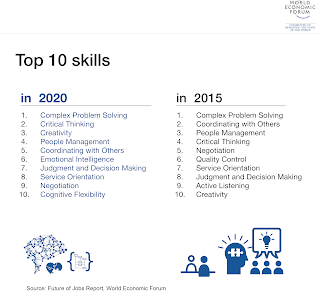

THOUGHT PATTERN
OF ACADEMIC DISCIPLINES
WHAT IS THOUGHT PATTERN?
- :a habit of thinking in a particular way or making certain assumptions, usually positive or negative
- way of thinking about something, or an attitude towards it
WHAT MOST INFLUENCE YOUR
THINKING AND BEHAVIOR ?
THINKING AND BEHAVIOR ?
https://www.quora.com/What-most-influences-your-thinking-and-behavior-Why
KNOWING THEM.., KNOWING THEIR THOUGHTS'...
1. PROPHET MUHAMMAD PBUH
https://en.wikipedia.org/wiki/Portal:Muhammad
https://www.youtube.com/watch?v=egav1IFr5n0
2. iMAM AL-GHAZALI : ABU HAMID MUHAMMAD BIN MUHAMMAD IBN MUHAMMAD AL-GHAZALI
https://en.wikipedia.org/wiki/Al-Ghazali
https://www.youtube.com/watch?v=ONDk_kr_UVw
KNOWING THEM.., KNOWING THEIR THOUGHTS'...
1. PROPHET MUHAMMAD PBUH
https://en.wikipedia.org/wiki/Portal:Muhammad
https://www.youtube.com/watch?v=egav1IFr5n0
2. iMAM AL-GHAZALI : ABU HAMID MUHAMMAD BIN MUHAMMAD IBN MUHAMMAD AL-GHAZALI
https://en.wikipedia.org/wiki/Al-Ghazali
https://www.youtube.com/watch?v=ONDk_kr_UVw
3. TAN SRI SYED MOKHTAR AL BUKHARY
4. TAN SRI DR SYED MUHAMMAD AL NAQUIB BIN ALI AL-ATTAS
5. PROF DIRAJA UNGKU AZIZ BIN UNGKU ABDUL HAMID
6. TUAN GURU DATO' BENTARA SETIA
HAJI NIK ABDUL AZIZ BIN NIK MAT
https://www.youtube.com/watch?v=rA2pNqr4ZNg
https://www.youtube.com/watch?v=nW4l35isNVA
https://www.youtube.com/watch?v=XKhZ7-HMqKk
8. SULTAN NAZRIN MUIZZUDDIN SHAH IBNI
https://www.youtube.com/watch?v=nW4l35isNVA
https://www.youtube.com/watch?v=XKhZ7-HMqKk
8. SULTAN NAZRIN MUIZZUDDIN SHAH IBNI
ALMARHUM SULTAN AZLAN MUHIBBUDDIN SHAH AL-MAGHFUR-LAH
10. JACK MA
https://www.youtube.com/watch?v=rojft7g2BSI
11. DR ZAKIR NAIK
https://en.wikipedia.org/wiki/Zakir_Naik
https://www.youtube.com/watch?v=hSvmlX8g3ig
#################################################################################
11. DR ZAKIR NAIK
https://en.wikipedia.org/wiki/Zakir_Naik
https://www.youtube.com/watch?v=hSvmlX8g3ig
#################################################################################
THOUGHT PATTERNS : GUIDES TO LEARNING
- PATTERNS PROVIDE A STRATEGY OR FRAME WORK FOR COMPREHENDING A MASSAGE
- PATTERNS FACILITATE STORAGE AND RETRIEVAL OF INFORMATION IN MEMORY
- ANTICIPATE THE PEOPLES' THOUGHT DEVELOPMENT
- PROVIDE A MEANS OF UNDERSTANDING AND ANALYZING SOMETHINGS
ACADEMIC THOUGHT PATTERN:
1. DEFINITION
• Identifies general class or group to which term belongs
• Identifies what distinguishes term from others in same class or category
2. LISTING
• Giving details on a topic by stating them one after another
3. ORDER OR SEQUENCE
(a) CRONOLOGY :
• Events occur in time
• History,
• Government anthropology
(b) PROCESS :
• Steps by which actions are accomplished
• Similar to chronology since steps follow in time
(c) ORDER OF IMPORTANCE:
• Ideas are arranged in one or two ways
• From most important to least important
• Or from least to most important
(d) SPATIAL ORDER :
• Physical location or position
• Order in space
e.g. the center the lower portion area, next to,beside,to the left
4. COMPARISON AND CONTRAST
• Use to discuss similarities or differences between or among ideas, theories or concepts
5. CAUSE AND EFFECT
• the Relationship between two or more events connected in time
• One event causes the other
6. CLASSIFICATION
• Dividing a topic into parts
•Discussing each part : What is included and What is not incllded
7. PROBLEM SOLUTION
• Define a problem and offer solutions
LEARNING OUTCOMES :
1. To recognize common academic thought patterns :
# By identifying the pattern of a paragraph, it becomes more meaningful and easier to remember.
# Once you recognize a pattern, its organization becomes familiar and predictable.
# Once you recognize a pattern, its organization becomes familiar and predictable.
2. To use thought patterns to focus your reading and understand things
EXPLORE & LEARN MORE...
https://medium.com/the-mission/the-secret-weapon-of-the-21st-century-47f06877120b
SELF AWARENESS: DR TASHA EURICH:
https://www.successpodcast.com/show-notes/2017/12/20/evidence-reveals-the-most-important-skill-of-the-21st-century-with-dr-tasha-eurich
RULE OF LAW: DI MANA ALLAH
http://www.harakahdaily.net/index.php/kolumnis/presiden/9332-rule-of-law-di-mana-allah
ANTARA IMAN DAN INTEGRITI
http://www.harakahdaily.net/index.php/kolumnis/presiden/9919-antara-iman-dan-integriti
THE 10 SKILLS YOU NEED TO THRIVE IN
THE FOURTH INDUSTRIAL REVOLUTION
https://www.weforum.org/agenda/2016/01/the-10-skills-you-need-to-thrive-in-the-fourth-industrial-revolution/

INDUSTRIAL REVOLUTION: WHAT IS ALTERNATIVE FOR MALAYSIA?
http://www.azzadmuzahet.com/2018/02/industrial-revolution-40-what-is.html

SELF AWARENESS: DR TASHA EURICH:
https://www.successpodcast.com/show-notes/2017/12/20/evidence-reveals-the-most-important-skill-of-the-21st-century-with-dr-tasha-eurich
RULE OF LAW: DI MANA ALLAH
http://www.harakahdaily.net/index.php/kolumnis/presiden/9332-rule-of-law-di-mana-allah
ANTARA IMAN DAN INTEGRITI
http://www.harakahdaily.net/index.php/kolumnis/presiden/9919-antara-iman-dan-integriti
THE 10 SKILLS YOU NEED TO THRIVE IN
THE FOURTH INDUSTRIAL REVOLUTION
https://www.weforum.org/agenda/2016/01/the-10-skills-you-need-to-thrive-in-the-fourth-industrial-revolution/

INDUSTRIAL REVOLUTION: WHAT IS ALTERNATIVE FOR MALAYSIA?
http://www.azzadmuzahet.com/2018/02/industrial-revolution-40-what-is.html

To know and understand further about the
Exhibit 1 : Students Requires 16 Skills for The 21st Century, please surf the following link :
http://www.tomorrowtodayglobal.com/2016/04/25/16-skills-21st-century-education/
"ULUL ALBAB :
THINK BEYOND TOMORROW"
ISSUES THAT WE NEED TO KNOW FURTHER...
1. https://mindaaidc.wordpress.com/2012/10/21/perjuangan-islam-anwar-diragui-sejak-dibebas-penjara-2004/
1. https://mindaaidc.wordpress.com/2012/10/21/perjuangan-islam-anwar-diragui-sejak-dibebas-penjara-2004/
2. http://waklongman.blogspot.com/2011/09/ustaz-ismail-mina-beliau-3. https://id.wikipedia.org/wiki/Nurcholish_Madjid
4. http://al-ghari.blogspot.com/2008/01/ancaman-liberalisme-dan-pluralisme.html
5. http://www.utusan.com.my/rencana/utama/bahaya-fahaman-liberalisme-pluralisme-1.217943
6. http://www.utusan.com.my/rencana/utama/menolak-fahaman-liberalisme-dan-pluralisme-agama-1.442717
7. https://www.ismaweb.net/2018/05/21/ancaman-islam-liberal-di-malaysia/
8. http://inilahjalansufi.blogspot.com/2018/07/ajaran-aqidah-wahabi-prof-dr-muhammad.html
9. https://mykmu.net/2013/03/26/pemergian-dr-muhammad-uthman-el-muhammady-satu-kehilangan-besar-al-fatihah/4. http://al-ghari.blogspot.com/2008/01/ancaman-liberalisme-dan-pluralisme.html
5. http://www.utusan.com.my/rencana/utama/bahaya-fahaman-liberalisme-pluralisme-1.217943
6. http://www.utusan.com.my/rencana/utama/menolak-fahaman-liberalisme-dan-pluralisme-agama-1.442717
7. https://www.ismaweb.net/2018/05/21/ancaman-islam-liberal-di-malaysia/
8. http://inilahjalansufi.blogspot.com/2018/07/ajaran-aqidah-wahabi-prof-dr-muhammad.html
10. http://gbse.com.my/v4No11MAY2018/Paper-169-.pdf
11. https://lebaikacak.files.wordpress.com/2015/07/siri-9.pdf
"PLURALISME AGAMA"
BY
DR. MUHAMMAD UTHMAN EL MUHAMMADY
"MENGHADAPI PEMIKIRAN PASCA MODENISME"
BY
DR MUHAMMAD UTHMAN EL MUHAMMADY
"INTELLECTUAL STRUGGLE"
BY
USTAZ AUNI BIN MOHAMED
DEBATE: THE QURAN AND BIBLE
IN THE LIGHT OF SCIENCE
SAINS DAN ISLAM | Ketahui "Adakah Ateisme satu Realiti atau Satu Silap Faham Manusia?" bersama YBhg Datuk Prof Dr Azizan Baharuddin: Ketua Pengarah IKIM.
TITAH SULTAN NAZRIN:
"UMAT MELAYU ISLAM SEDANG TERPERANGKAP"
http://www.astroawani.com/berita-malaysia/umat-melayu-islam-sedang-terperangkap-sultan-nazrin-192989
ENJOY READING & WATCHING...
THANK YOU..
ALLAH KNOWS EVERYTHING...

MAY ALLAH BLESS US ALWAYS...






0 Comments